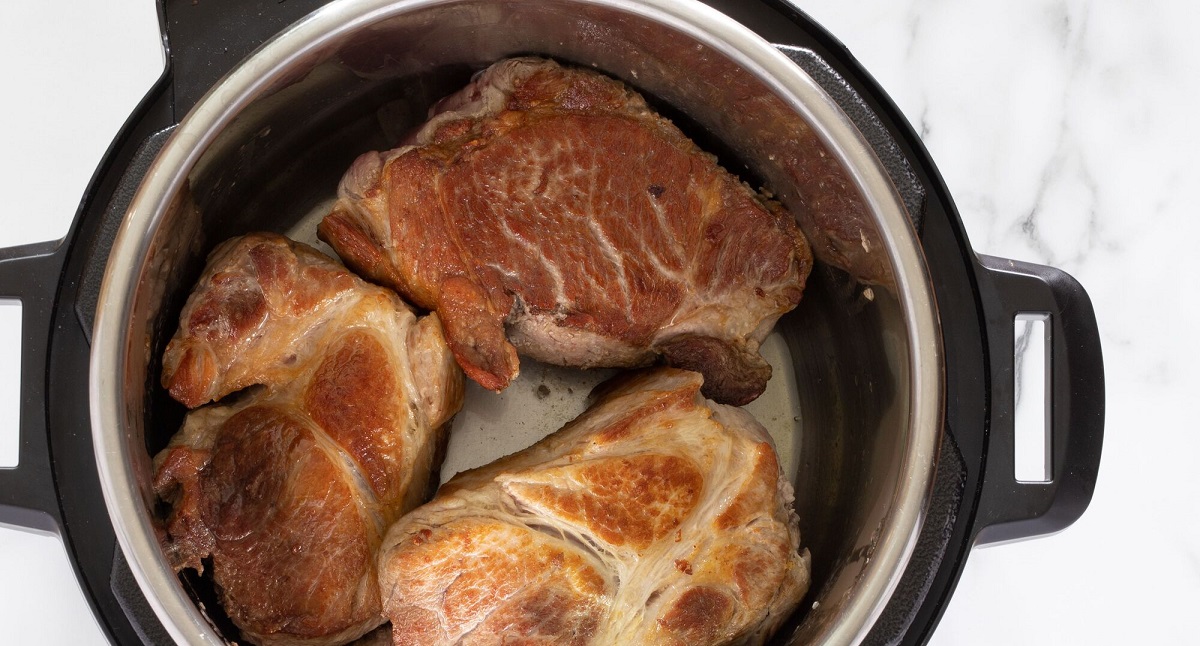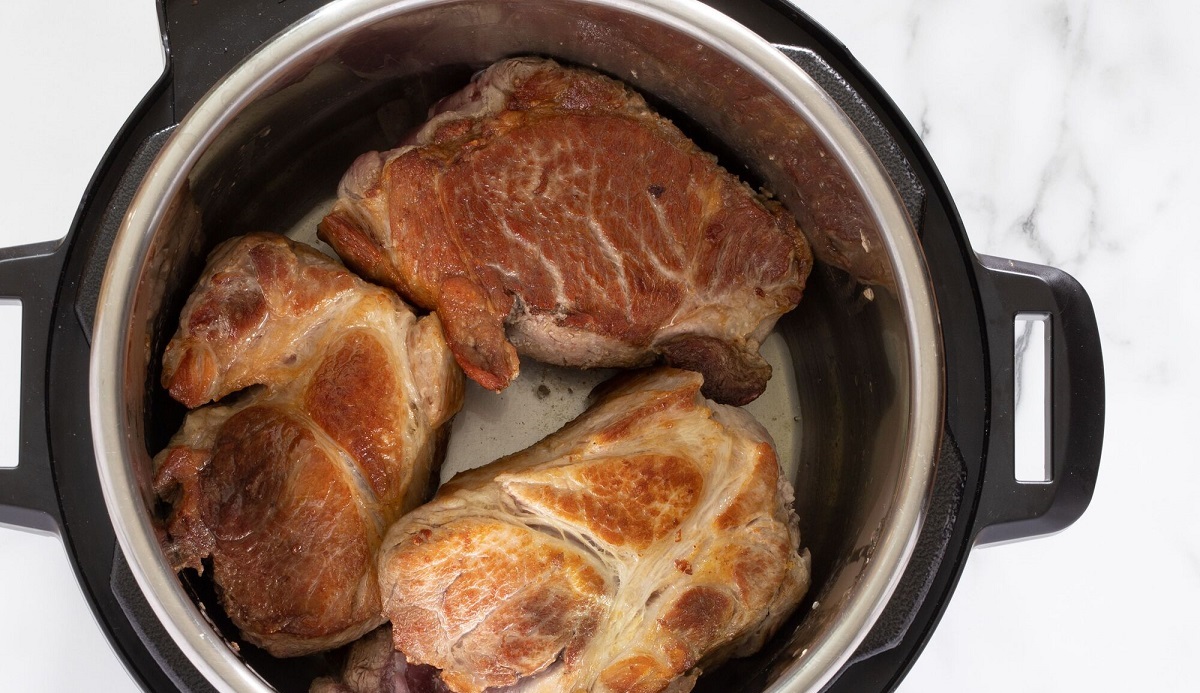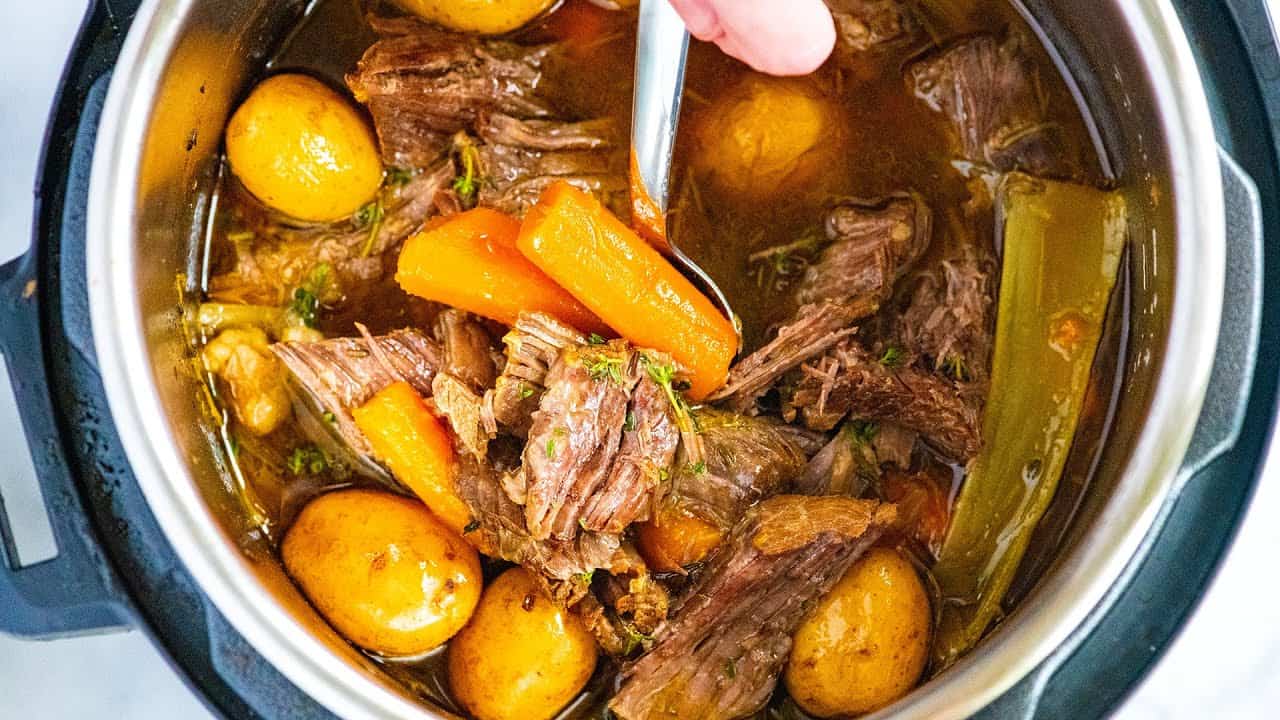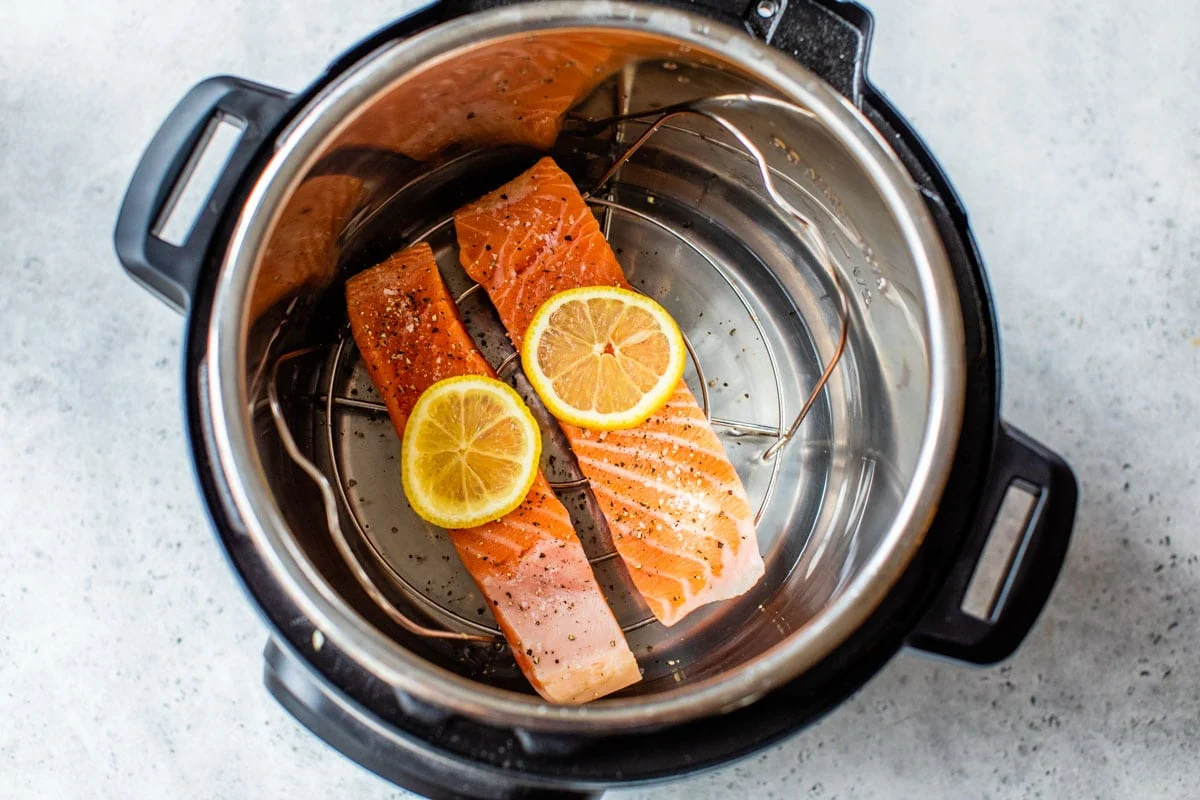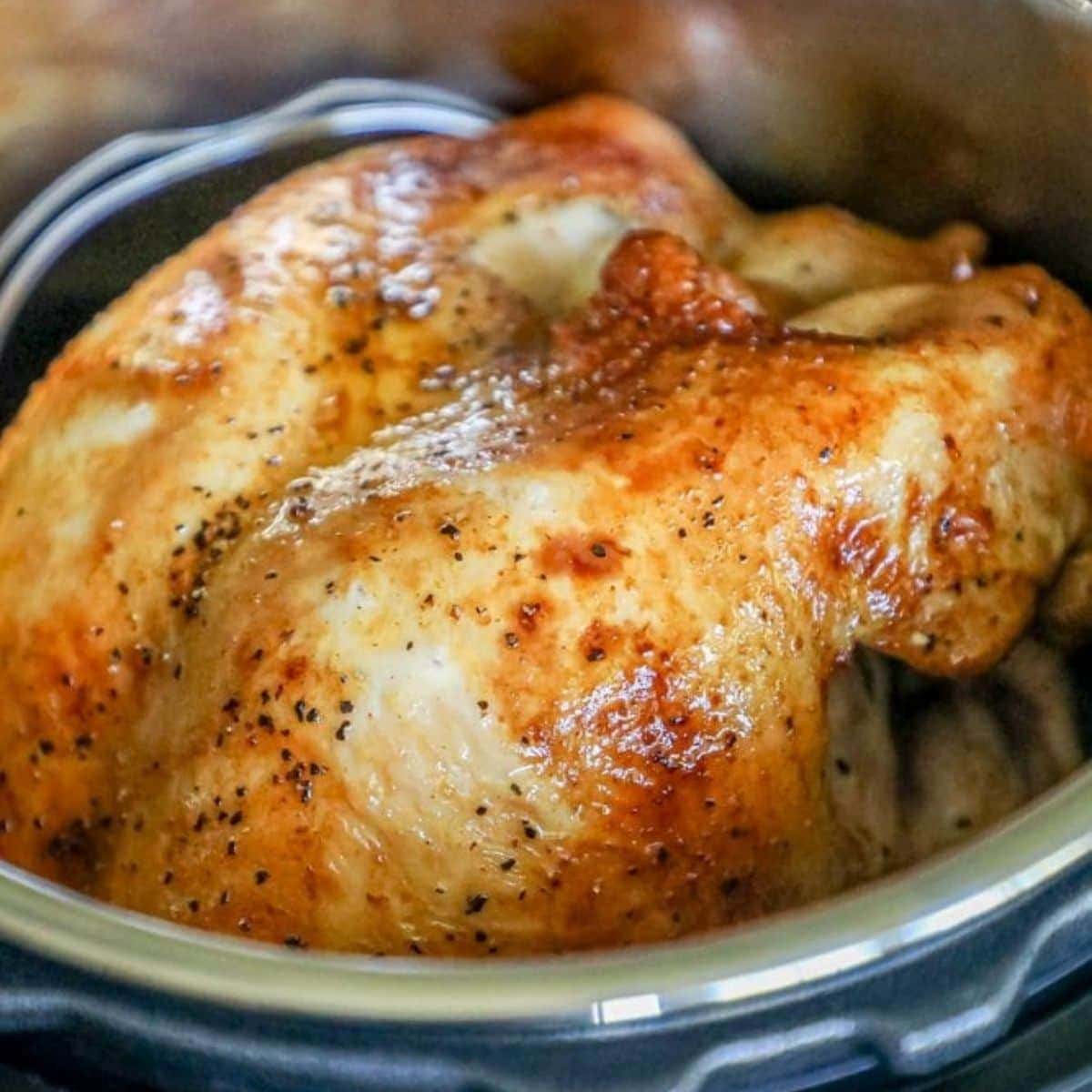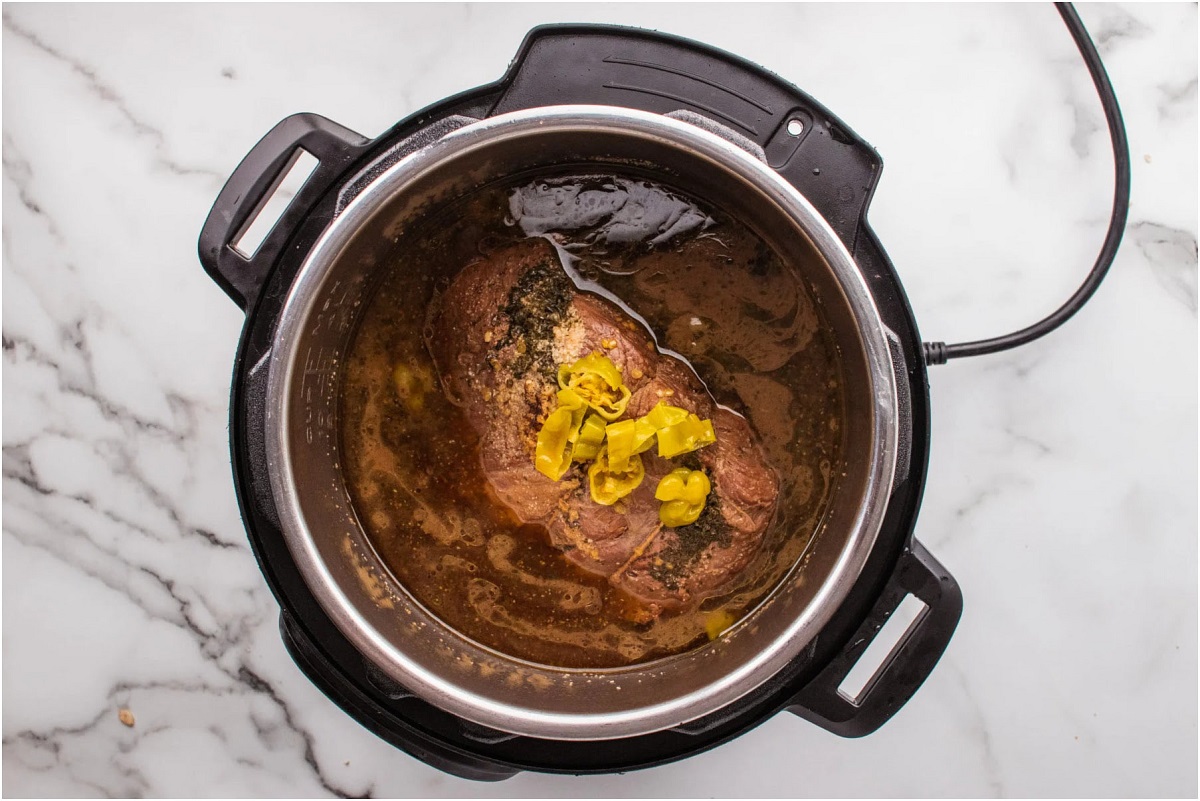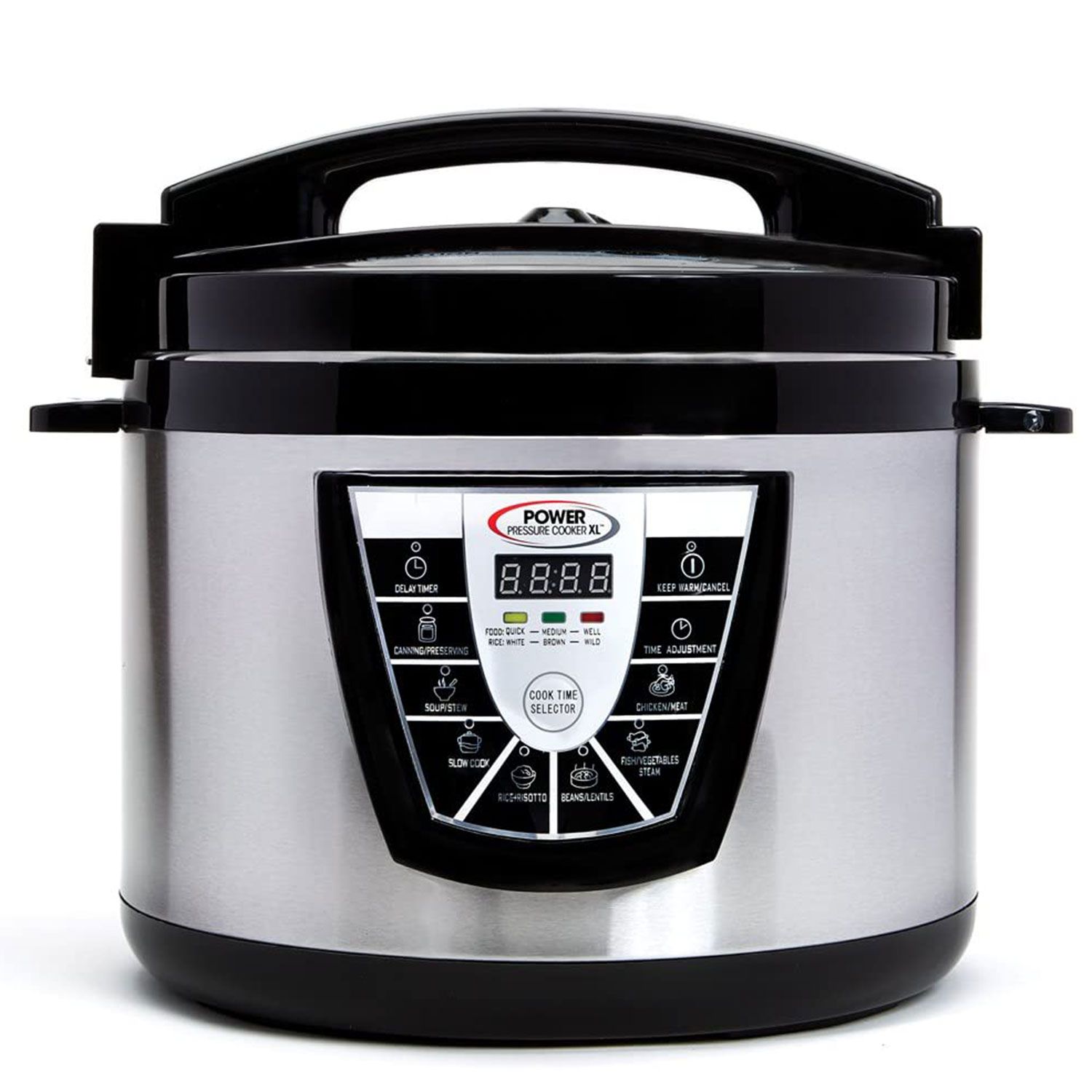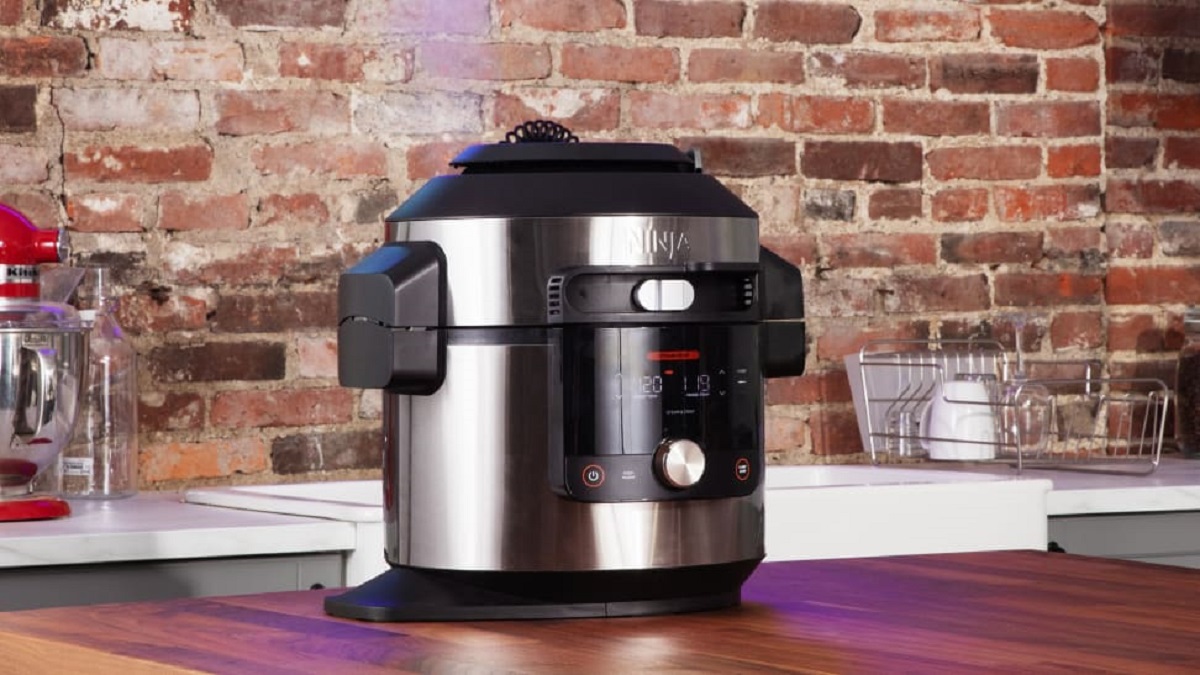Benefits of Cooking a Frozen Roast in an Electric Pressure Cooker
Cooking a frozen roast in an electric pressure cooker comes with several advantages. Not only does it save time and effort, but it also results in a deliciously tender and flavorful roast. Here are some of the key benefits of using an electric pressure cooker for cooking a frozen roast:
- Time-saving: One of the biggest benefits of using an electric pressure cooker is the significant reduction in cooking time. When cooking a frozen roast, the pressure cooker utilizes high-pressure steam to rapidly cook the meat, resulting in a shorter cooking time compared to traditional cooking methods.
- Convenience: Cooking a frozen roast in an electric pressure cooker eliminates the need for thawing. You can simply take the roast out of the freezer and place it directly into the pressure cooker. This is particularly useful when you’re short on time or forgot to thaw the roast in advance.
- Preserves nutrients: The high-pressure cooking process in an electric pressure cooker helps retain more nutrients in the meat compared to other cooking methods that require longer cooking times. This means you can enjoy a healthier meal without compromising on taste or tenderness.
- Enhanced flavor: The sealed environment of an electric pressure cooker helps lock in the flavors of the roast. The steam generated during the cooking process penetrates the meat, resulting in a more flavorful and succulent roast. The natural juices of the meat are preserved, ensuring a moist and tender final product.
- Tenderizes tough cuts: Frozen roasts are often tougher compared to thawed ones. However, the pressure cooking method of an electric pressure cooker is highly effective at tenderizing even the toughest cuts of meat. The steam pressure breaks down the connective tissues and collagen in the roast, resulting in a melt-in-your-mouth texture.
By using an electric pressure cooker to cook a frozen roast, you can enjoy a perfectly cooked, flavorful, and tender roast in a fraction of the time. The convenience, preservation of nutrients, enhanced flavor, and ability to tenderize tough cuts make it a worthwhile cooking method for any meat lover.
Tips for Preparing a Frozen Roast for Cooking
Before cooking a frozen roast in an electric pressure cooker, there are a few important steps to ensure the best results. Consider these tips to properly prepare your frozen roast:
- Thawing vs. Cooking Frozen: While cooking a frozen roast directly in the electric pressure cooker is convenient, you may achieve even better results by thawing the roast partially. This allows for more even cooking and helps to avoid any potential food safety concerns. If you choose to thaw, place the frozen roast in the refrigerator and allow it to partially thaw for a few hours.
- Seasoning: To enhance the flavor of your roast, season it well before cooking. You can use a combination of salt, pepper, garlic powder, or any other preferred seasonings. Rub the seasonings onto the surface of the roast, ensuring that it covers all sides for maximum flavor penetration.
- Searing the Roast: For an added depth of flavor, consider searing the roast before pressure cooking. Heat a small amount of oil in the pressure cooker on the sauté mode. Once hot, place the seasoned roast in the cooker and sear it on all sides until a golden brown crust forms. This step will help enhance the flavor and appearance of the final dish.
- Liquid for Pressure Cooking: When pressure cooking a frozen roast, it’s essential to add enough liquid to create steam. This liquid can be broth, stock, wine, or a combination thereof. Ensure that the liquid covers at least a quarter of the roast, but be careful not to overfill the pressure cooker beyond its maximum capacity to avoid any safety concerns.
- Vegetables and Aromatics: Placing vegetables and aromatics, such as onions, garlic, carrots, and herbs, in the pressure cooker along with the roast will infuse additional flavor into the meat. The vegetables will also benefit from the flavorful juices released during the cooking process.
Following these tips will help ensure a delicious and well-prepared frozen roast for your electric pressure cooker. Thawing partially, seasoning, searing the roast, adding sufficient liquid, and incorporating vegetables and aromatics will elevate the flavors and contribute to a mouthwatering final result.
The Cooking Time for Different Types of Frozen Roasts
The cooking time for frozen roasts in an electric pressure cooker can vary depending on the type of meat and its thickness. Here are approximate cooking times for some common types of frozen roasts:
- Beef Roast: For a frozen beef roast, such as Chuck Roast or Round Roast, you can expect a cooking time of around 20 to 30 minutes per pound. Therefore, a 3-pound beef roast would require around 60 to 90 minutes of pressure cooking time. You can adjust the cooking time based on the desired level of tenderness.
- Pork Roast: When cooking a frozen pork roast, such as Pork Shoulder or Pork Loin, the cooking time is generally similar to that of beef. Plan for approximately 20 to 30 minutes per pound. For example, a 4-pound pork roast would require around 80 to 120 minutes of pressure cooking time.
- Lamb Roast: The cooking time for a frozen lamb roast, such as Leg of Lamb or Shoulder Roast, is also similar to that of beef and pork. It is recommended to cook for around 20 to 30 minutes per pound. So, a 2.5-pound lamb roast would typically need approximately 50 to 75 minutes of pressure cooking time.
- Chicken Roast: Frozen chicken roasts, such as Whole Chicken or Chicken Breast Roast, require slightly shorter cooking times compared to red meats. Plan for around 6 to 8 minutes per pound. For instance, a 5-pound chicken roast would require approximately 30 to 40 minutes of pressure cooking time.
- Turkey Roast: If you’re cooking a frozen turkey roast in the electric pressure cooker, the cooking time will depend on the size and cut of the turkey. As a general guideline, calculate approximately 7 to 9 minutes per pound. For example, a 10-pound turkey roast would require around 70 to 90 minutes of pressure cooking time.
It’s important to note that these cooking times are approximate and can vary depending on factors such as the specific pressure cooker model, the desired level of tenderness, and the starting temperature of the frozen roast. Always refer to the manufacturer’s guidelines and use a meat thermometer to ensure the roast reaches the appropriate internal temperature for safe consumption.
How to Determine the Appropriate Cooking Time for Your Specific Roast
While there are general guidelines for cooking frozen roasts in an electric pressure cooker, it’s important to note that the cooking time can vary based on various factors. Here’s how you can determine the appropriate cooking time for your specific roast:
- Consult the Recipe: If you have a specific recipe that you’re following, check if it provides cooking instructions for frozen roasts. Many recipes will provide recommended cooking times based on the type of roast and its size. Follow the recipe instructions as a starting point.
- Consider the Size and Thickness: The size and thickness of the roast will impact the cooking time. Larger roasts will generally require longer cooking times, while smaller roasts will cook more quickly. Take note of the weight of your roast and adjust the cooking time accordingly.
- Check the Pressure Cooker Manual: Refer to the manual of your electric pressure cooker. It may provide cooking time charts or guidelines specifically for frozen meats. Different pressure cooker models may have slight variations in cooking times, so it’s essential to use the recommended times for your specific cooker.
- Use the Weight-based Calculation: As a general rule, you can calculate the cooking time for a frozen roast based on its weight. For most meats, a good starting point is cooking for approximately 20 to 30 minutes per pound. Remember that this is just an estimate, and factors like the starting temperature of the meat and personal preference for tenderness may require adjustments.
- Use a Meat Thermometer: A reliable meat thermometer is an indispensable tool for determining the doneness of your roast. It’s essential to ensure that the internal temperature reaches the appropriate level to guarantee that the meat is safely cooked. Refer to a safe temperature guide for your specific type of roast, and adjust the cooking time accordingly if needed.
Remember that cooking times may vary, and it’s always better to err on the side of caution. It’s easier to cook the roast for a bit longer if needed rather than ending up with undercooked meat. With some practice, you’ll become more experienced and develop a better understanding of the cooking times required for your specific electric pressure cooker and the size and type of roast you’re cooking.
Steps to Cook a Frozen Roast in an Electric Pressure Cooker
Cooking a frozen roast in an electric pressure cooker is a simple process that yields flavorful and tender results. Follow these steps to cook a frozen roast to perfection:
- Prepare the Roast: Remove the frozen roast from its packaging and pat it dry with paper towels. Season the roast with your desired herbs, spices, and seasonings. For added flavor, you can also sear the roast on all sides in the pressure cooker using the sauté mode.
- Add Liquid: Place the trivet or rack in the bottom of the electric pressure cooker. Add the recommended amount of liquid, such as broth, stock, or wine, to the cooker. The liquid helps to create steam and prevent the roast from sticking to the bottom of the pot.
- Place the Roast: Carefully place the seasoned and prepared roast on top of the rack or trivet in the pressure cooker. Make sure the roast is not touching the liquid and is elevated to allow for proper steam circulation during cooking.
- Set the Cooking Time: Close the lid of the electric pressure cooker and ensure it is properly sealed. Set the cooking time based on the type of roast and its size. You can refer to the previous section for approximate cooking times, or consult the recipe or the pressure cooker manual for specific guidelines.
- Start Pressure Cooking: Select the appropriate pressure cooking setting on your electric pressure cooker. This might be labeled as “meat,” “manual,” or “pressure cook.” Adjust the pressure level if necessary, typically high pressure is used for roasts. Start the cooking process by pressing the corresponding button on the cooker.
- Natural Release or Quick Release: Once the cooking time is complete, you have two options for releasing the pressure in the cooker. For a natural release, allow the pressure to naturally release on its own, which can take anywhere from 10 to 20 minutes. For a quick release, carefully move the pressure release valve to the “venting” position to release the steam quickly. Follow the manufacturer’s instructions for your specific cooker.
- Check for Doneness: After releasing the pressure, carefully open the lid of the pressure cooker. Use a meat thermometer to check the internal temperature of the roast, ensuring it reaches the recommended safe temperature for your specific type of roast. If it needs further cooking, you can return the roast to the pressure cooker and cook for a few more minutes.
- Rest and Serve: After reaching the desired doneness, remove the roast from the pressure cooker and let it rest for a few minutes to allow the juices to redistribute. Slice the roast and serve it with your favorite sides or use the flavorful juices from the pressure cooker as a delicious gravy.
With these easy steps, you can turn a frozen roast into a tender and delicious centerpiece for your meal using an electric pressure cooker. The combination of pressure cooking and proper seasoning ensures a flavorful and succulent roast every time.
Factors That May Affect the Cooking Time of a Frozen Roast
While there are general guidelines for cooking a frozen roast in an electric pressure cooker, it’s important to be aware of the various factors that can influence the cooking time. These factors include:
- Type and Cut of Roast: Different types and cuts of roasts have varying levels of tenderness and thickness, which can impact the cooking time. For example, a tenderloin roast will generally cook faster than a tougher cut like a chuck roast.
- Size and Weight of Roast: The size and weight of the frozen roast play a significant role in determining the cooking time. Larger roasts will require more time to cook thoroughly, while smaller roasts will cook more quickly.
- Starting Temperature of the Roast: The temperature of the frozen roast when placed in the electric pressure cooker can affect the cooking time. A roast that is partially thawed will generally require less cooking time than one that is completely frozen.
- Altitude: The altitude at which you are cooking can impact the cooking time. At higher altitudes, the air pressure is lower, which affects the boiling point of liquids and the cooking time of foods. You may need to adjust the cooking time slightly if you are cooking at a high altitude.
- Electric Pressure Cooker Model and Performance: Different models of electric pressure cookers may have variations in performance, efficiency, and heating capabilities. It’s important to become familiar with your specific pressure cooker and understand how it performs to adjust the cooking time accordingly.
- Desired Level of Tenderness: The desired level of tenderness for the roast can also impact the cooking time. If you prefer a more tender and well-done result, you may need to cook the roast for a longer duration. Conversely, if you prefer a slightly rare or medium-rare doneness, you can reduce the cooking time.
Considering these factors will help you make adjustments to the cooking time to ensure that your frozen roast is cooked to your preference. It’s important to monitor the cooking process, use a meat thermometer to check the internal temperature, and adjust the cooking time as needed to achieve the desired level of doneness and tenderness.
Pro Tips for Achieving the Perfect Tenderness and Flavor in a Frozen Roast
To elevate the tenderness and flavor of your frozen roast cooked in an electric pressure cooker, consider these pro tips:
- Marinate or Tenderize: If time allows, consider marinating your frozen roast before cooking. A marinade can help tenderize the meat and infuse it with additional flavors. You can use a combination of herbs, spices, acids (such as lemon juice or vinegar), or even tenderizing agents like papaya or pineapple juice. Alternatively, you can use a meat tenderizer to physically break down the fibers and enhance tenderness.
- Use Broth or Stock: Replace some or all of the liquid requirement in your recipe with flavorful broth or stock. This adds an extra layer of taste and enhances the overall richness of the dish. You can use beef, chicken, vegetable, or even bone broth to match the type of roast you are cooking.
- Incorporate Aromatics: Adding aromatic ingredients like onions, garlic, and herbs to the cooking liquid can impart a delightful fragrance to the roast. These ingredients infuse the meat with flavorful nuances, enhancing the overall taste experience. Consider adding rosemary, thyme, bay leaves, or your favorite herb and spice combinations.
- Rest the Roast: After pressure cooking, allow the roast to rest for a few minutes before slicing. This resting period allows the juices to redistribute, resulting in a moister and more tender final texture. Cover the roast loosely with foil to help retain its temperature during resting.
- Reduce the Cooking Liquid: For a more concentrated flavor, you can reduce the cooking liquid after pressure cooking the roast. Remove the roast from the pressure cooker, strain the liquid, and transfer it to a saucepan. Simmer the liquid on the stovetop until it reduces and forms a rich and flavorful sauce or gravy to serve alongside the roast.
- Brown or Caramelize: To achieve an appealing crust or caramelization on the surface of the roast, consider using the sauté function on your electric pressure cooker before or after pressure cooking. Searing the frozen roast on high heat can enhance the flavor, texture, and appearance of the final dish.
- Experiment with Seasonings: Don’t be afraid to get creative with your seasonings! Try different herb and spice blends, rubs, or marinades to suit your taste preferences and enhance the flavor profile of the roast. You can experiment with a combination of sweet, savory, spicy, or smoky flavors to elevate the overall taste experience.
By incorporating these pro tips into your cooking process, you can take your frozen roast to the next level. Whether it’s marinating, using flavorful liquids, adding aromatics, or experimenting with seasonings, these techniques will help you achieve the perfect tenderness and flavor that will impress your guests or elevate your family meals.
FAQs about Cooking Frozen Roasts in an Electric Pressure Cooker
Here are the most commonly asked questions about cooking frozen roasts in an electric pressure cooker:
- Can you cook a frozen roast without thawing it first?
Yes, one of the advantages of using an electric pressure cooker is that you can cook a frozen roast without the need to thaw it first. However, keep in mind that the cooking time may be slightly longer compared to a thawed roast. - Is it safe to cook a frozen roast in an electric pressure cooker?
Yes, it is safe to cook a frozen roast in an electric pressure cooker. The high pressure and heat generated by the cooker ensure that the roast reaches the appropriate internal temperature for safe consumption. However, always follow the manufacturer’s guidelines and use a meat thermometer to ensure thorough cooking. - How do I adjust the cooking time for a frozen roast?
The general guideline for cooking a frozen roast in an electric pressure cooker is 20 to 30 minutes per pound. However, factors such as the roast’s size, thickness, starting temperature, and personal preference for tenderness may require adjustments. It’s essential to refer to the recipe, pressure cooker manual, or use a meat thermometer to determine the appropriate cooking time. - Do I need to add extra liquid when cooking a frozen roast?
Yes, it’s important to add sufficient liquid to the electric pressure cooker when cooking a frozen roast. The liquid creates steam, which aids in the cooking process and prevents the roast from sticking to the bottom of the pot. It also helps to infuse flavor into the meat and prevents it from drying out. - Can I sear a frozen roast in the pressure cooker?
Yes, you can sear a frozen roast in the pressure cooker before pressure cooking. Using the sauté function, heat a small amount of oil in the cooker and sear the frozen roast on all sides until a golden crust forms. Searing adds flavor and enhances the appearance of the roast. - Can I use frozen vegetables with the roast in the pressure cooker?
Yes, you can add frozen vegetables to the pressure cooker along with the roast. Frozen vegetables will cook well under pressure and absorb the flavors of the roast and cooking liquid. Ensure to adjust the cooking time accordingly based on the type and size of the vegetables. - How do I ensure the roast is tender?
To ensure the roast is tender, you can use a combination of techniques such as marinating or tenderizing the roast before cooking, incorporating flavorful liquids like broth or stock, and using the pressure cooking method itself, which helps break down the connective tissues. Additionally, allowing the roast to rest before slicing helps retain moisture and tenderness.
These frequently asked questions should help you navigate the process of cooking a frozen roast in an electric pressure cooker. Keep in mind that it’s always important to follow the specific guidelines for your electric pressure cooker model and consult reliable recipes or resources for best results.
Conclusion
Cooking a frozen roast in an electric pressure cooker is a game-changer when it comes to convenience, time-saving, and achieving deliciously tender results. By following the right steps and considering key factors, you can ensure a successful cooking experience. Thawing the roast partially, seasoning it well, and using the appropriate cooking time are crucial. Adding flavorful liquids, aromatics, and experimenting with seasonings can further enhance the taste. With the help of pro tips, you can achieve the perfect tenderness and flavor, elevating your frozen roast to a whole new level.
Remember to consult the recipe, pressure cooker manual, or reliable resources for specific cooking times and guidelines. Adapting to factors like the roast type, size, starting temperature, and personal preference ensures a well-cooked result. Safety should be prioritized by using a meat thermometer to ensure the roast reaches the recommended internal temperature.
Cooking a frozen roast in an electric pressure cooker opens up a world of possibilities for delicious meals. The convenience, time-saving benefits, and ability to achieve tender and flavorful results make it an invaluable tool in the kitchen. So, don’t hesitate to embrace the power of your electric pressure cooker and explore the culinary delights that await with a perfectly cooked frozen roast!







